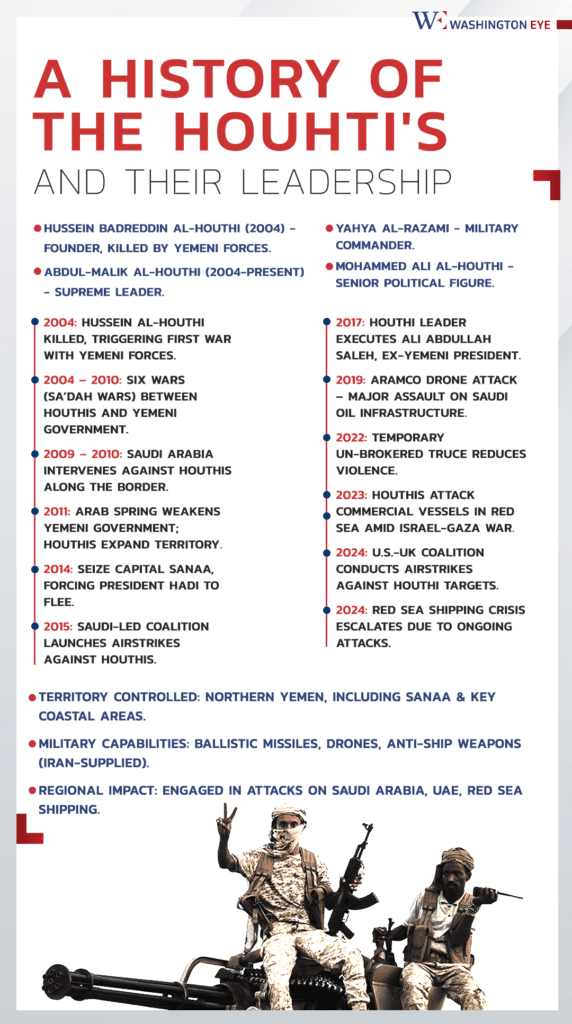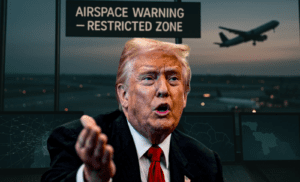The United States has launched a new wave of airstrikes targeting Houthi positions in Yemen, aiming to weaken the group’s military capabilities and deter further attacks on international shipping in the Red Sea. These strikes, carried out in coordination with the United Kingdom and other allies, come in response to Houthi assaults on commercial and military vessels, which the Houthis claim are part of their broader campaign against Israeli and Western influence in the region. Despite months of bombardment, the Houthis remain defiant, vowing to escalate their operations and continue their attacks, raising questions about whether military action can achieve proper stability.
The Cycle of Unyielding Conflict
The United States has launched significant airstrikes targeting Houthi positions in Yemen, aiming to dismantle the group’s capabilities and ensure the safety of international shipping routes in the Red Sea. U.S. Defense Secretary Pete Hegseth emphasized the campaign’s relentless nature, stating it will persist until the Houthis cease their attacks on U.S. assets, underscoring a commitment to restoring freedom of navigation.
However, historical patterns indicate that such military interventions have limited success in quelling the Houthis’ resolve. The group has endured extensive assaults from a Saudi-led coalition since 2014 and continues to maintain control over significant territories, including the capital, Sanaa.
Israel’s Persistent Strikes and Houthi Resilience
Israel has also engaged in military actions against the Houthis, conducting airstrikes in response to missile and drone attacks. Notably, in December 2024, Israeli forces targeted multiple sites in Yemen, including Sanaa International Airport and key infrastructure at ports, following Houthi aggression.
Despite these operations, the Houthis have continued their activities, suggesting that external military pressure alone may not suffice to suppress their insurgency. The group’s sustained operations highlight their adaptability and the challenges inherent in relying solely on force to achieve long-term stability.
The Humanitarian Dimension: Blockades and Aid Restrictions
A critical aspect of the ongoing conflict is the humanitarian crisis exacerbated by blockades and restrictions on aid. The Houthis have cited the blockade of Gaza by Israel as a justification for their attacks on Israeli vessels, framing their actions as solidarity with Palestinians.
The blockade has led to severe shortages of essential supplies, including food, medicine, and clean water, contributing to widespread suffering among civilians. This humanitarian crisis fuels further resentment and can serve as a catalyst for continued conflict, as affected populations may support insurgent groups opposing those enforcing the blockades.
A Call for Comprehensive Solutions
The persistence of the Houthi insurgency, despite extensive military campaigns by both the United States and Israel, underscores the limitations of force-centric strategies. Addressing the root causes of the conflict, including political disenfranchisement and humanitarian grievances, is crucial for achieving sustainable peace.
Ensuring the unimpeded flow of humanitarian aid and lifting blockades that disproportionately affect civilians could alleviate some of the underlying tensions. Such measures may reduce the support base for insurgent groups and open pathways for diplomatic resolutions.
A Final Note
While military interventions aim to neutralize immediate threats, they often fail to address the deeper issues perpetuating conflict. A holistic approach that combines security measures with humanitarian considerations and inclusive political dialogue is essential to break the cycle of violence and foster lasting peace in regions like Yemen.














